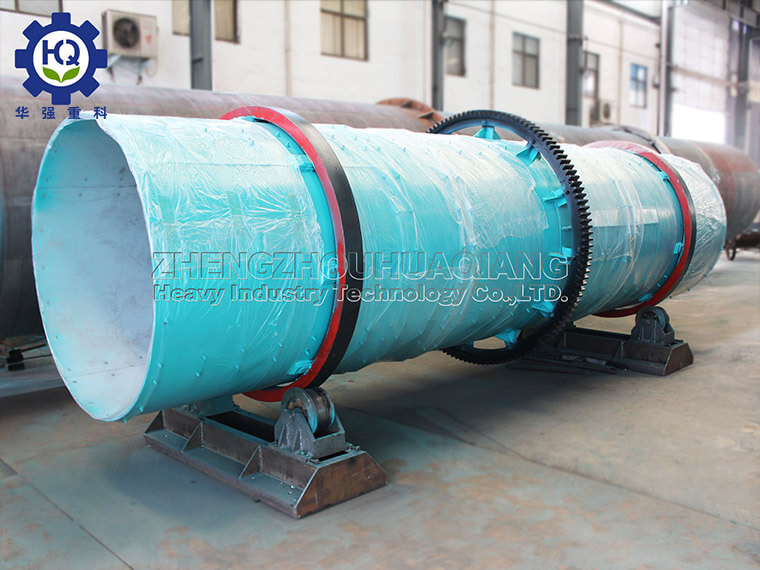The drum granulator has the characteristics of beautiful appearance, simple operation, low energy consumption, long service life, uniform drying, and convenient maintenance. It is a relatively advanced granulator in China. This machine is suitable for cold and hot granulation, as well as large-scale production of high, medium, and low concentration compound fertilizers and compound fertilizers. This product is now available throughout the country.
Equipment characteristics of drum granulator:
1. The ball forming rate reaches 90%, there is a small amount of returned material, the particle size of the material is small, and it can be re granulated.
2. Injecting steam for heating, increasing material temperature, reducing moisture content after balling, and improving drying efficiency.
3. The cylinder body adopts a special rubber plate lining or acid resistant stainless steel lining plate, which makes the raw materials not easily stick to the cylinder and plays a role in anti-corrosion and insulation, achieving automatic scar removal, tumor removal, and eliminating the traditional scraper device;
4. Large production capacity. Low power consumption and low maintenance costs.
5. Low investment, quick results, good economic benefits, and reliable performance.
6. Low power. No discharge of three wastes, stable operation, convenient maintenance, reasonable process layout, advanced technology, low production cost, high ball forming strength, good appearance quality, corrosion resistance, wear resistance, and low energy consumption;
Working principle of drum granulator:
The drum granulator is driven by a main electric motor to drive the belt and pulley. The transmission is transmitted to the driving shaft through a reducer, and the split gear installed on the driving shaft engages with the large gear ring fixed on the body, working in opposite directions. The material is added from the feeding end and passes through the inside of the cylinder. Through the special structure inside the cylinder, it is made into particles and flows out through the discharge port. Due to the continuous entry of materials and the continuous rotation of the granulator, mass production can be achieved.